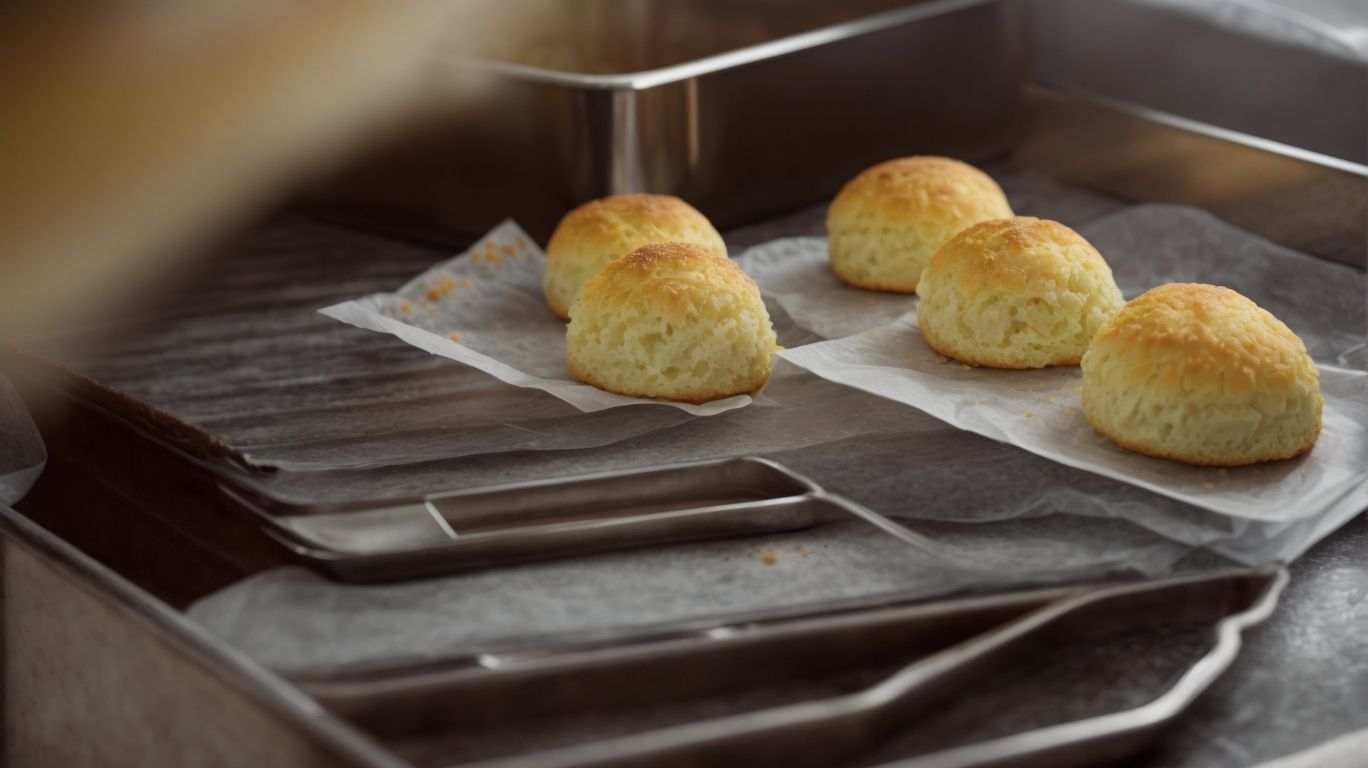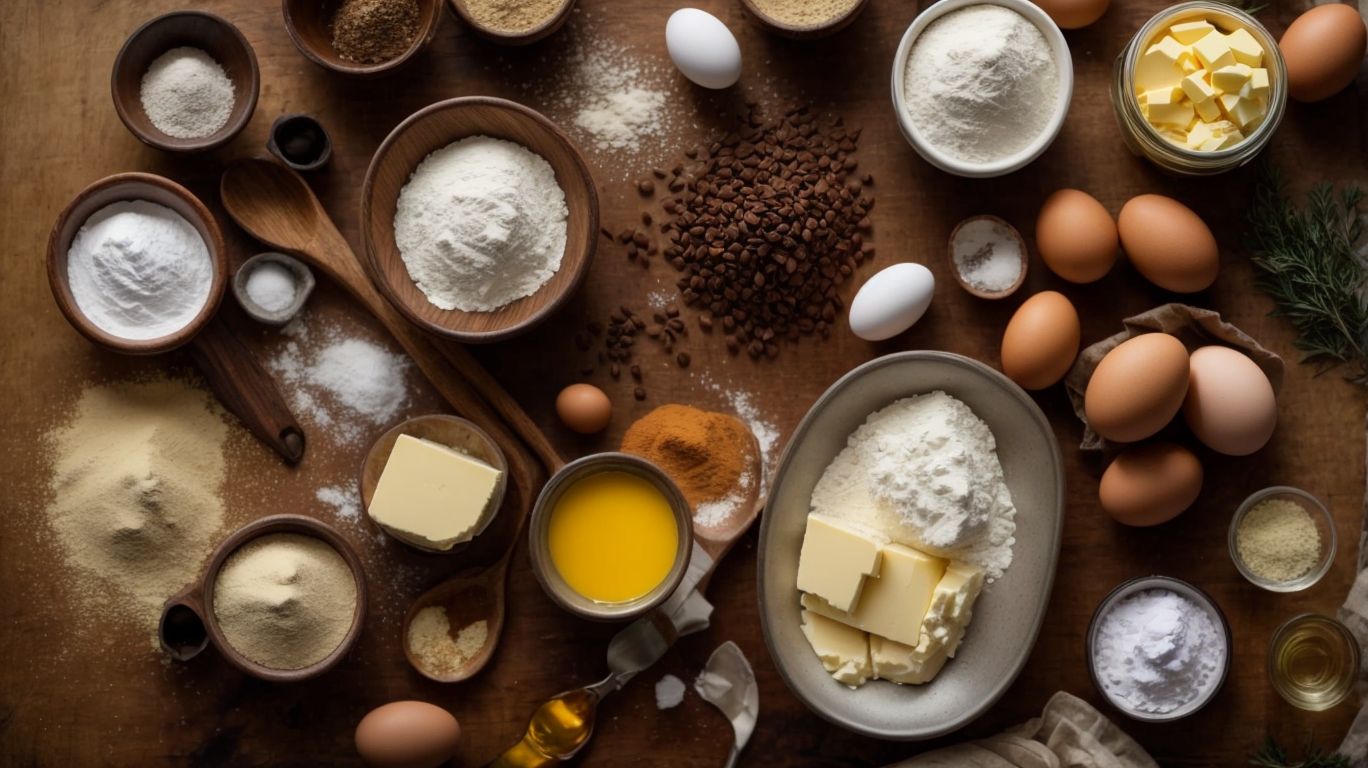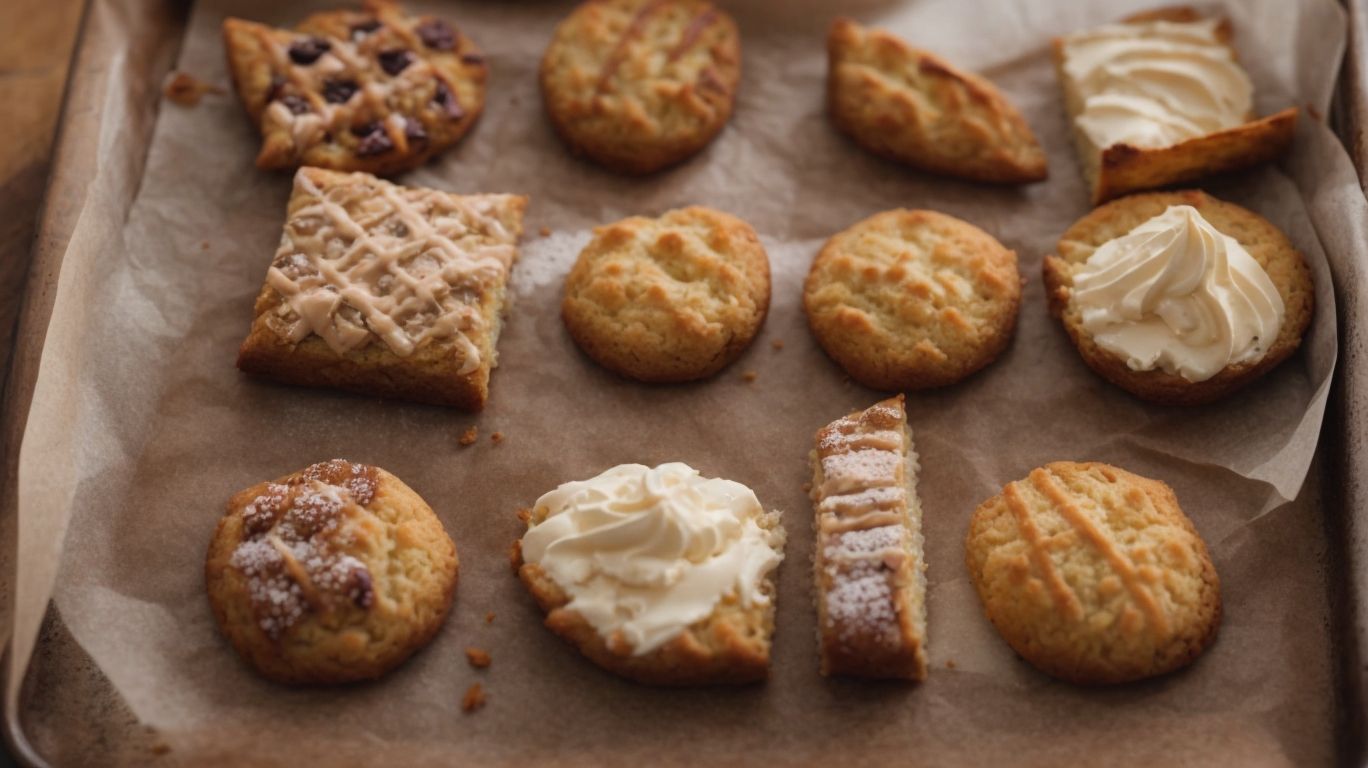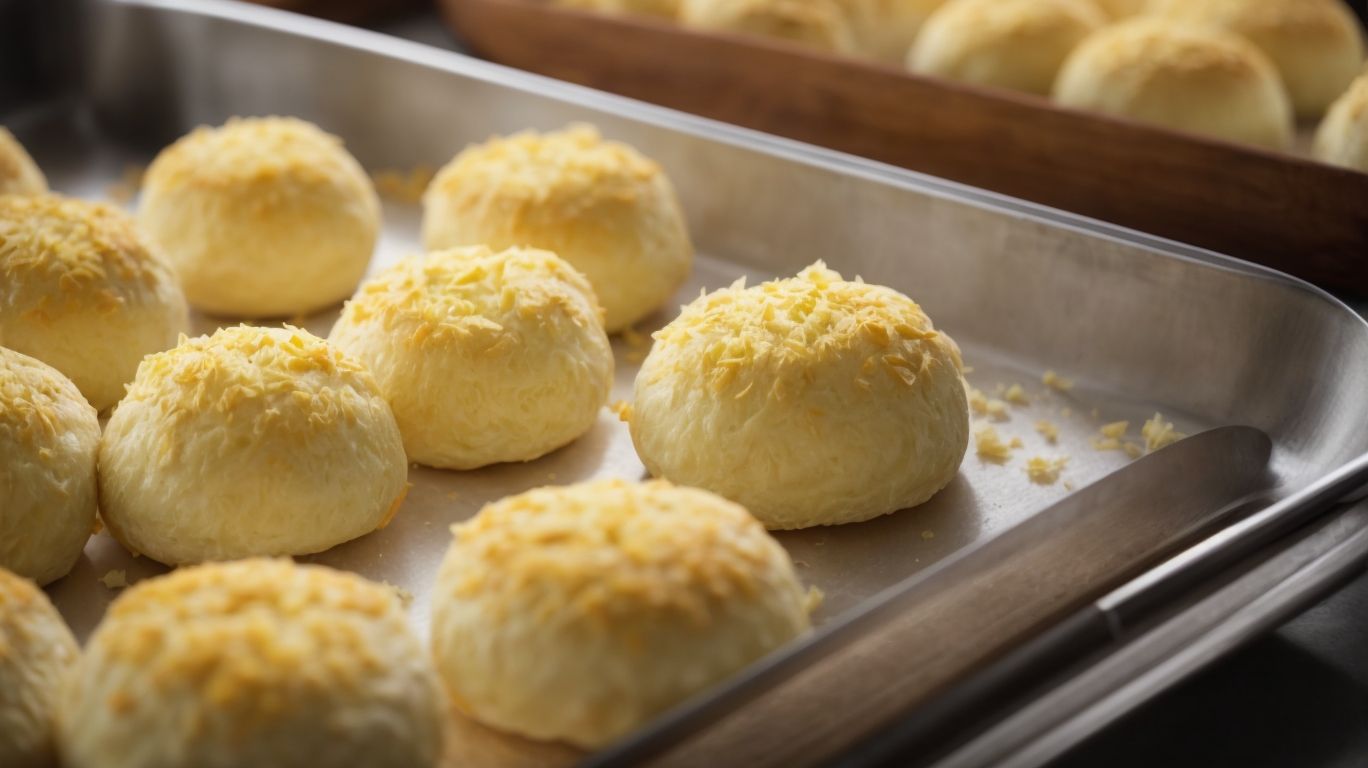How to Bake Ensaymada Without Mold?
Are you a fan of ensaymada but don’t have a mold to bake them in?
Don’t worry, I’ve got you covered! In this article, I’ll walk you through the steps to bake delicious ensaymada without a mold.
From preparing the dough to adding the perfect toppings, I’ll provide you with all the tips and tricks you need to make your own ensaymada at home. Let’s get started and satisfy those Filipino pastry cravings!
Key Takeaways:
About the Author
Chris Poormet, the creative mind behind Poormet.com, is a celebrated Culinary Blogger of the Year with a rich background as a former chef known for his excellence in food photography.
His journey into the world of culinary arts began in the bustling kitchens of several renowned restaurants, where he honed his cooking skills and developed a sophisticated palate. Chris’s passion for creating visually captivating dishes soon led him to explore the realm of food photography, where his unique style and attention to detail set him apart from the crowd.
His blog, Poormet.com, quickly gained popularity for its mouth-watering recipes, stunning visuals, and engaging storytelling. Through his blog, Chris shares his culinary expertise, innovative recipes, and culinary adventures with a global audience, inspiring aspiring chefs and food enthusiasts alike.
What is Ensaymada?

Credits: Poormet.Com – Samuel Lopez
Ensaymada is a traditional Filipino bread with Spanish influence, known for its soft texture and sweet toppings, popularized by bakeries like Red Ribbon and Goldilocks.
Originally adapted from the Spanish ‘ensaimada,’ Ensaymada has become a staple in Filipino cuisine, characterized by its spiral shape and buttery flavor.
This delectable treat is commonly enjoyed during special occasions such as fiestas and Christmas, symbolizing warmth and celebration.
Renowned bakeries like Red Ribbon and Goldilocks have played a significant role in popularizing Ensaymada, offering their own unique twists on the classic recipe.
What are the Ingredients for Ensaymada?

Credits: Poormet.Com – Eugene Smith
The ingredients for Ensaymada include a blend of flour, milk, butter, yeast, and sugar, creating a dough base that is enriched with cheese and baked to perfection.
Flour is the primary component of the dough, providing structure and texture to the Ensaymada. The milk adds richness and moisture, resulting in a soft and tender crumb. Butter imparts a delicious buttery flavor and contributes to the dough’s softness. Yeast is essential for leavening, helping the dough rise to achieve that light, airy consistency.
Cheese, a crucial ingredient in Ensaymada, adds a savory contrast to the sweet bread, enhancing its overall flavor profile. The dough preparation involves kneading the ingredients together until smooth, allowing for proper gluten development and fermentation. The result is a delightful Filipino pastry that is enjoyed for its softness and unique taste.
Flour
Flour is a key ingredient in Ensaymada, forming the base of the dough that undergoes a meticulous preparation process, including mixing and allowing the dough to rise.
Regarding creating the perfect Ensaymada, the flour plays a crucial role in the overall outcome. It is not just about any flour; the type and quality you choose can significantly impact the final texture and taste of your Ensaymada. The process of preparing the dough involves a delicate balance of incorporating the right amount of flour to achieve the desired consistency. Mixing the flour with other ingredients like yeast, sugar, and eggs requires a gentle yet thorough approach to ensure even distribution and activation of the yeast.
As the dough starts to come together, its elasticity and structure develop, mainly due to the proteins present in the flour. These proteins, gluten being the primary one, form a network that traps carbon dioxide produced by the yeast during the rising process. Through this fermentation, the dough expands, becoming airy and light, perfect for the fluffy texture characteristic of Ensaymada.
Sugar
Sugar adds a touch of sweetness to Ensaymada, both in the dough itself and as a delectable topping that enhances the flavor profile.
Ensaymada, a traditional Filipino bread delicacy, owes much of its irresistible taste to the crucial role that sugar plays in its recipe. The sugar in the dough not only sweetens the bread but also helps in creating a soft, tender texture that melts in your mouth with each bite. As a topping, sugar sprinkled generously on top forms a delicate caramelized crust when baked, adding a delightful contrast of textures and flavors. This extra sprinkling of sweetness elevates the overall sensory experience, making Ensaymada a truly indulgent treat.
Eggs
Eggs play a crucial role in Ensaymada, enriching the dough with their richness and contributing to the bread’s soft texture when baked.
Eggs act as a binder, helping to hold the dough together while providing necessary proteins for structure formation. When mixed with other ingredients, the proteins in eggs coagulate during baking, forming a network that traps air and steam, leading to a light and airy crumb in the final product. This unique property of eggs also aids in creating a tender crumb and a golden crust, enhancing the overall sensory experience of the Ensaymada.
Butter
Butter is a key ingredient in Ensaymada, contributing to the dough’s softness, imparting a rich flavor, and serving as a luscious topping.
Regarding dough preparation, butter plays a crucial role in creating that melt-in-your-mouth texture that Ensaymada is famous for. The fat content in butter helps tenderize the dough, giving it a light and fluffy consistency. Butter adds a delicious richness to the Ensaymada, making each bite a delightful experience for the taste buds.
Not only does butter enhance the overall flavor profile of this Filipino pastry, but it also serves as a delectable topping. Once baked, a generous slather of butter on top adds a glossy finish and a savory touch, taking the Ensaymada to a whole new level of indulgence.
Milk
Milk is a vital component of Ensaymada, ensuring the dough’s moistness, enhancing the flavor profile, and aiding in yeast activation for dough rise.
Regarding baking Ensaymada, the role of milk goes beyond mere liquid inclusion. The proteins and fats present in milk contribute to the dough’s structure, providing a soft and tender texture to the final product. The natural sugars in milk caramelize during baking, imparting a delightful hint of sweetness that complements the buttery richness of the bread.
The lactose in milk serves as a natural food source for the yeast, promoting fermentation and ensuring that the dough rises properly. This symbiotic relationship between milk and yeast creates the light and airy crumb characteristic of a well-made Ensaymada.
Yeast
Yeast is a crucial ingredient in Ensaymada, responsible for facilitating dough rise through fermentation and activation, resulting in the perfect baked texture.
Yeast, a living organism, plays a pivotal role in the Ensaymada baking process. When yeast is combined with warm water and sugar in the dough-making stage, it becomes activated, producing carbon dioxide gas as a byproduct. This gas gets trapped within the dough, causing it to rise and become light and airy. During fermentation, yeast breaks down sugars in the dough, creating alcohol and organic acids, which contribute to the distinct flavor profile of Ensaymada. Hence, without yeast, this Filipino delicacy would lack its characteristic softness and flavor.
Salt
Salt is a critical component in Ensaymada, enhancing the overall flavor profile, balancing the dough composition, and complementing the toppings during baking.
Without salt, Ensaymada would lack depth and complexity in taste, as it brings out the nuances of the other ingredients, such as the buttery richness and sweetness of the dough. Moreover, salt plays a crucial role in maintaining the equilibrium of the dough, regulating yeast fermentation for optimal rise and texture. The slight saltiness in the Ensaymada dough contrasts beautifully with the sweet toppings like sugar, cheese, or even ube, creating a harmonious blend of flavors in every bite.
How to Bake Ensaymada Without Mold?
Baking Ensaymada without a mold is achievable by shaping the dough meticulously, allowing it to proof, and adding delectable toppings before baking to perfection.
Once you have prepared the ensaymada dough to the desired consistency, it’s time to master the art of shaping it without a mold. Here’s where your creativity can shine – you can opt for traditional coiled shapes or get inventive with braids or swirls. Whatever shape you choose, ensure that the dough is evenly portioned to guarantee uniform baking.
After shaping, place the dough on a lined baking sheet and let it proof until it doubles in size. This stage is crucial as it allows the dough to develop flavor and texture. For a successful proofing process, find a warm, draft-free spot in your kitchen.
Prepare the Dough
The first step in baking Ensaymada without a mold is to prepare the dough meticulously, involving mixing the ingredients, allowing it to rest, and kneading it to the desired consistency.
Start by combining flour, sugar, yeast, and salt in a large mixing bowl. Then, slowly pour in warm milk and melted butter while stirring continuously until a sticky dough forms. Cover the bowl with a damp cloth and let it sit for about an hour in a warm place to let the dough rise.
- After the dough has doubled in size, punch it down to release any air bubbles.
- Next, transfer the dough onto a floured surface and knead it vigorously until it becomes smooth and elastic.
Keep in mind that proper kneading is crucial for developing the gluten structure in the dough, ensuring a light and fluffy texture in the finished Ensaymada.
Shape the Dough
After preparing the dough, the next step is to shape it by rolling, cutting into equal pieces, and swirling to create the signature Ensaymada form.
Shaping the Ensaymada dough without a mold requires a certain finesse and technique to achieve the fluffy and elegant appearance typical of this Spanish-inspired bread. To start, gently roll out the dough on a floured surface into a rectangular shape of uniform thickness. Then, using a sharp knife or pastry cutter, divide the dough into equal portions. Each piece should be sized adequately to ensure uniformity in the final product. The next crucial step involves skillfully twisting and twirling each dough segment to form the classic spiral shape that defines Ensaymada. This twisting not only adds visual appeal but also contributes to the bread’s light and airy texture.
Proof the Dough
Proofing the Ensaymada dough involves allowing it to rise, covering it to retain moisture, and ensuring the oven is preheated to the optimal temperature for baking.
When proofing Ensaymada dough without a mold, you can achieve lovely results by simply forming them by hand and letting them rise on a parchment-lined baking sheet. This method allows the dough to expand freely, giving the pastry a more rustic look.
After shaping the dough, place a damp cloth over it to prevent it from drying out during the rising process. This step is crucial as it maintains the moisture content within the dough, ensuring a soft and fluffy texture once baked.
Bake the Ensaymada
Baking Ensaymada involves placing the prepared dough in the oven at the specified temperature, allowing it to bake for the recommended duration, and cooling before brushing the top with a buttery finish.
For Ensaymada baked without a mold, preheat your oven and position the rack in the center to ensure even baking. Consider using a baking sheet lined with parchment paper for easy removal and cleanup. Once the dough is in the oven, maintain a consistent temperature for the duration indicated in your recipe. Check for doneness by observing a golden brown color and tapping the surface for a hollow sound.
After the baking time is up, let the Ensaymada rest in the turned-off oven with the door slightly ajar for a few minutes to prevent sudden temperature changes. Once ready, transfer the sweet bread to a cooling rack to allow air circulation and reduce condensation. As a final touch, gently brush the top with melted butter for a luscious sheen and added richness to your delightful pastry.
Add the Toppings
Enhance the flavor of Ensaymada by adding delectable toppings such as butter, sugar, and cheese before baking, and dusting with powdered sugar and grated cheese after cooling.
When preparing Ensaymada without a mold, you have the freedom to get creative with the toppings. Begin by selecting high-quality butter that will melt into the dough during baking, enhancing its richness. Choose a fine sugar to sprinkle generously, providing a sweet contrast to the buttery flavor. For the cheese topping, opt for a mix of sharp and mild cheeses for a balanced taste. After baking, gently dust the cooled Ensaymada with a sprinkle of powdered sugar for a touch of sweetness and a scattering of grated cheese to add a savory note and improve its appearance.
What are the Tips for Baking Ensaymada Without Mold?

Credits: Poormet.Com – Kyle Lewis
Discover expert tips for baking Ensaymada without a mold, including utilizing substitute tools like a muffin tin, baking pan, cookie cutter, or silicone mold for creative variations.
When you find yourself without the traditional mold for Ensaymada, there are several clever ways to achieve that perfect shape and texture. One ingenious option is to use a muffin tin, which can help you create individual-sized Ensaymadas that are not only cute but also easy to share or distribute. A round baking pan can be your best friend in shaping this delightful pastry into a larger, more rustic version, perfect for a family gathering or special occasion.
If you prefer a more customized look, consider using a cookie cutter to shape the dough into unique designs before baking. This can add a fun twist to your Ensaymadas and make them stand out on the table. Another unconventional yet effective tool is a silicone mold, which offers flexibility and non-stick properties, making it easier to release your Ensaymadas without any fuss.
Use a Substitute Mold
When baking Ensaymada without a mold, consider using a substitute tool like a cup or ramekin to shape the dough for a unique and personalized presentation.
Using a cup or ramekin opens up a world of possibilities for customization. These alternative molds allow you to experiment with different sizes and shapes, giving your Ensaymada a distinct look. The choice of mold can impact the overall texture as well. Traditional molds produce the classic spiral shape, but using a cup may result in a more rounded presentation. The surface patterns created by these substitutes may differ, adding a touch of creativity to your final product.
Use a Muffin Tin
Opt for a muffin tin as a versatile baking solution for Ensaymada, ensuring convenient portioning and uniformity in shape for a delightful presentation.
Using a muffin tin when making Ensaymada eliminates the need for a specific mold, allowing for a creative twist on the traditional recipe. The individual compartments of the muffin tin not only aid in shaping the dough but also provide a structured and compact form, resulting in beautifully uniform Ensaymada pieces. This method minimizes the risk of uneven baking and ensures that each delicacy is consistent in size and appearance.
Use a Baking Pan
Utilize a baking pan as a versatile alternative when baking Ensaymada without a mold, allowing for sheet shaping and customizable presentation options.
Using a baking pan provides a convenient way to showcase your creativity with Ensaymada. The beauty of using a baking pan lies in its flexibility – you can opt for round, square, or even novelty-shaped pans to add a unique touch to your baked goods. Additionally, choosing the right pan size can affect the texture and baking time of your treat, so be sure to select a pan that aligns with your recipe instructions. Whether you prefer a classic Ensaymada shape or want to experiment with different styles, a baking pan offers endless possibilities for your baking endeavors.
Use a Cookie Cutter
Add a touch of creativity to your Ensaymada by using a cookie cutter as a shaping tool, allowing for unique designs and individualized portions.
Experimentation with a cookie cutter when baking Ensaymada without a mold can open up a world of possibilities for customization. The versatility of this kitchen tool goes beyond just cutting cookies, providing an opportunity to create intricate patterns and shapes on your sweet bread. By choosing different cookie cutter sizes and shapes, you can tailor your Ensaymada servings for different occasions or personalize them for special events. The process of using a cookie cutter to shape your Ensaymada dough is not only fun but also allows for a professional touch to your homemade treats.
Use a Silicone Mold
Explore the advantages of using a silicone mold for baking Ensaymada, offering flexibility, non-stick properties, easy release, and long-lasting durability.
When opting for a silicone mold, you open up a world of opportunities in your baking endeavors. The flexible nature of the mold allows you to effortlessly remove your delicate Ensaymada without the risk of it sticking. Its non-stick properties ensure that each pastry maintains its perfect shape, preventing any frustrating breakage upon removal.
With a silicone mold, the release process becomes a breeze – simply push the mold from underneath, and your freshly baked Ensaymada pops out intact. The durability of silicone ensures that your mold will withstand countless baking sessions, retaining its quality and performance over time.
Frequently Asked Questions
1. How to Bake Ensaymada Without Mold?
Ensaymada is a popular Filipino pastry that is usually baked in a special mold. However, if you don’t have a mold on hand, you can still make delicious ensaymada at home. Here’s how:
– Prepare a sheet of parchment paper or aluminum foil and cut it into 6-inch squares.
– Roll your dough into a small ball and place it on the center of the parchment paper.
– Gently press down on the dough to flatten it into a disc shape.
– Use a rolling pin to roll out the dough into a thin rectangle, about 1/4 inch thick.
– Roll the dough into a cylinder, starting from one of the long ends.
– Place the rolled dough onto a baking sheet, seam side down, and shape it into a coil.
– Repeat with the remaining dough and let the ensaymada rise before baking.
2. Can I use a regular baking pan instead of a mold?
Yes, you can use a regular baking pan to make ensaymada without a mold. Simply follow the same steps as mentioned above and place the rolled dough onto a greased baking pan. Make sure to leave some space in between each ensaymada to allow them to rise and expand.
3. What if I don’t have parchment paper or aluminum foil?
If you don’t have parchment paper or aluminum foil, you can still bake ensaymada without a mold. Use a greased baking sheet or pan instead and shape the dough into coils as mentioned above. However, using parchment paper or aluminum foil will make it easier to remove the ensaymada from the baking sheet and prevent it from sticking.
4. Can I use a different type of dough for ensaymada?
Traditionally, ensaymada is made with a soft and sweet dough similar to brioche. However, you can use a different type of dough if you prefer. Just make sure the dough is soft and pliable enough to be rolled and shaped into coils.
5. How can I make sure my ensaymada will have the right texture without a mold?
The key to a good ensaymada texture is in the dough. Make sure to knead the dough properly to develop the gluten and achieve a soft and elastic texture. Also, make sure to let the dough rise properly before shaping and baking to ensure a light and fluffy ensaymada.
6. Can I add toppings to my ensaymada without a mold?
Absolutely! Ensaymada is often topped with cheese, butter, and sugar. You can add these toppings or any other toppings of your choice to your ensaymada, even without a mold. Simply sprinkle the toppings on top of the shaped dough before baking and enjoy your personalized ensaymada.

